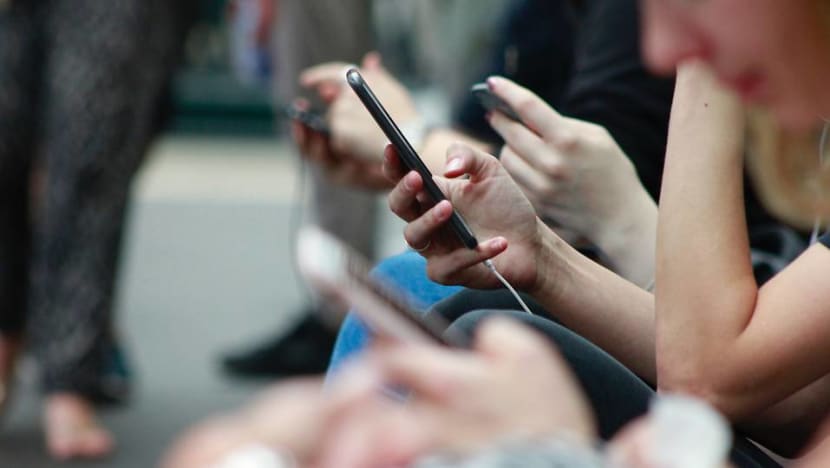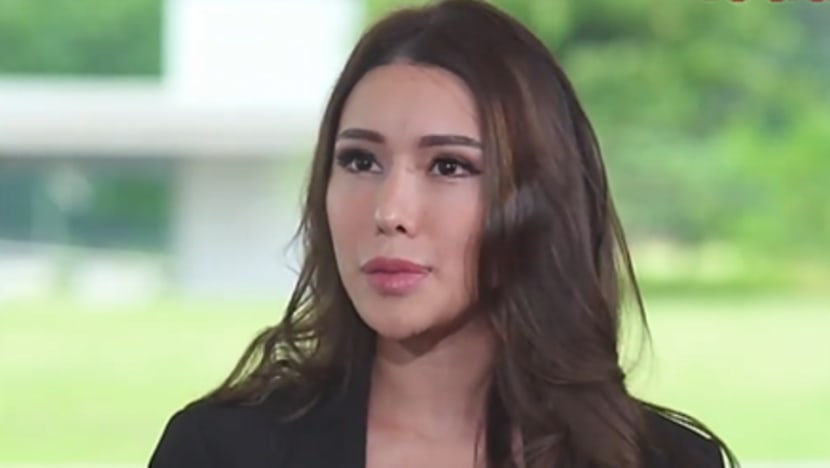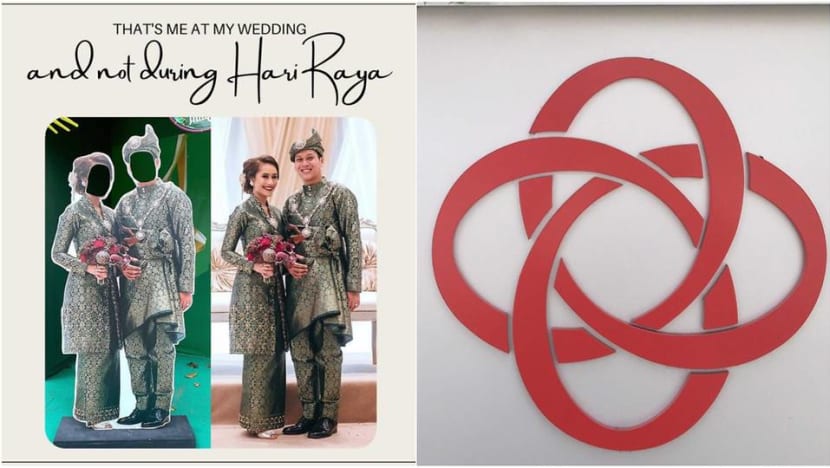Commentary: Benefits and drawbacks when citizens use social media to raise concerns
When people film, shoot or record slip-ups by organisations, they can cross the line and the burden on governance can become heavier, says the Institute of Policy Studies’ Carol Soon.

(Photo: Unsplash/Robin Worrall)
SINGAPORE: Recently, two Facebook users who were caregivers to family members with special needs posted their accounts of how their loved ones were distressed and traumatised by COVID-19 testing protocols.
One of the charges, an 18-year-old boy with autism who was not exempted from mandatory swabbing was so distressed that he hit the wall in the swabbing tent and tried to drag his mother out.
The other charge, a 34-year-old man who has an intellectual disability, struggled during a swab test to the point of being close to a meltdown.
Their caregivers’ posts attracted thousands of reactions within days and generated calls for authorities to look into how people with disabilities can be better assisted through COVID-19 protocols.
READ: MOM apologises to Jade Rasif for saying her account of maid with COVID-19 was 'inaccurate'
In response, Parliamentary Secretary of Health Rahayu Mahzam said in a Facebook post that the Ministry will engage relevant professionals and volunteers who work with those with special needs and relook how testing can be tweaked to be speedy, comfortable and accurate.
This incident came at the heels of the Ministry of Manpower’s apology last month to social media influencer Jade Rasif for saying that her account of her domestic helper’s COVID-19 scare posted on Instagram and Facebook was inaccurate.

Ms Rasif had taken to social media with a detailed account, showing screenshots of text messages and recorded voice calls to highlight gaps in how her case was managed and discrepancies between MOM’s account and her records.
These episodes are part of a growing trend among citizens using social media to share their lived experiences and report potential cases of shortcomings by traditional centres of authority – including government officials, private corporations and universities.
Many would recall then-NUS undergraduate Monica Baey sparking a national discussion on sexual harassment and a review of university policy after going public on social media in 2019 with her experience of sexual voyeurism on campus.
Such a development begets the question of what are the implications for governance when the watched – the citizens – become the watchers?
FROM SURVEILLANCE TO SOUSVEILLANCE
The use of technology to deal with a variety of issues is something countries have ramped up in recent years – smart imaging, wearable technology, blue-tooth enabled mobile devices are increasingly important in solving crimes, tracking disease outbreaks and so on.
These advances in personal consumer technology has also accelerated sousveillance practices - “the use of monitoring and tracking technologies to watch powerful entities” as described by scientist Steve Mann, like Ms Rasif’s screenshots of WhatsApp messages and recordings of phone calls.
READ: People's Association apologises after wedding photo of couple used as Hari Raya standee without their permission
While it is tempting to associate sousveillance with the recent rise in social media because of their omnipresence today, public recording of events goes way back before the use of social media.
One of the most well-known cases was the recording of Los Angeles police beating Rodney King in 1991. A member of the public had recorded the incident on his camcorder and sent the video to a local news station. The recording was subsequently broadcast on national television and led to the widespread censure of police abuse.
In Malaysia, members of the public take to the cyberspace to record and archive incidents related to law enforcers’ abuse of power on the still active blog Police Abuses.
Research sheds light on why people engage in sousveillance practices such as collecting and sharing information, photographs and locations of incidents. For some, it allows them to question those in power; for others, it provides them with a means to confront authorities and demand accountability.

For many, the gratification one derives from sharing is a sufficient motivator on its own.
Moreover, the speed at which one can seek on social media is unparalleled in history. The immediate feedback one receives on social media is a marked departure from the bureaucratic hoops that one has to jump through to seek redress.
A few years ago, I was asked by a local agency why people turn to social media to report others’ misdemeanours when there is no shortage of feedback channels and reporting hotlines.
READ: Commentary: Singapore needs a new Smart Nation vision that doesn't leave any citizen behind
I replied that from the perspective of users, the choice is clear. When people report what they view as a misdemeanour on social media, they receive instant feedback from other social media users and instant empathy in the forms of likes, shares, retweets, reactions and comments.
The cross-platform nature of the social media ecology helps to magnify the reach and effects of their personal accounts, and further validates their action.
WHAT DOES IT MEAN FOR GOVERNANCE?
Studies have suggested that the use of sousveillance has potential benefits. First, individuals now have the means to share their side of the story with documentary evidence, provide context to potentially controversial incidents and stake their personal credibility in using their named social media accounts to back these claims.
Second, others watching can learn what to expect from interactions with authorities, when more of such cases become available for review.
Third, sousveillance also increases transparency and enables citizens to identify inconsistent and wrongful behaviour. In other countries, platforms such as I Paid A Bribe in India and Bribespot in Cambodia provide a safe space for people to report bribery and corruption.
Citizen action in other countries highlights cases of abuse of power, while in Singapore, people flag organisational missteps and service gaps which can be rectified easily.

In the long run, citizen action in highlighting what went wrong and demanding for more transparent governance could potentially lead to improvements in service delivery, practice and communication on the part of the authorities.
However, while sousveillance democratises citizen participation and communication between the governed and the one who governs, the pervasive use of such tactics can have negative repercussions.
When the watched become the watchers, the traditional hierarchies once entrenched in societies become upended; norms that have provided some stability and guided social interactions are challenged.
As rules of engagement and ethics evolve, the law, corporate stewards and community leaders too have to keep pace and review what is acceptable and what is harmful.
While institutions should be held accountable for their actions, individual actors should not be put in harm’s way. Some people might go further than reporting misdemeanours to doxxing, with the intent of naming and shaming perpetrators.
READ: Commentary: Tracking your child’s online activity should not be done covertly
While sousveillance has yielded positive effects in some cases, taken to the extreme, it could put innocent people at risk and hinder day-to-day operations when the information is taken out of context, or worse, manipulated.
An example of citizen action crossing the line is the recent case involving a video posted on The Online Citizen Facebook page where a police officer was accused of reprimanding an elderly woman for not wearing a mask.
The subsequent release of body-worn camera footage from footage shows the police officer buying the woman a packet of food from a nearby stall rather than taunting her as claimed.
READ: Police officer wrongly accused of bullying elderly woman in Yishun says he's 'glad that the truth is out'
In the past, authorities have been able to control the narrative, set the agenda and define key issues of the day. Difficult issues might go unnoticed or be swept under the covers.
Technology has now given people the means to challenge this control of information and re-prioritise issues of concern. However, this has also increased the burden for authorities as they now have to look into every transgression that goes viral, which takes away precious time and resources in dealing with other more pressing issues.
Nevertheless, social media monitoring done with the intent to listen to citizens’ suggestions and grievances, instead of to control, would have to be an indispensable part of the governance toolkit.
Transparency and timely redress in decision-making make up the new DNA of effective governance.
Carol Soon is Head of the Society and Culture department at the Institute of Policy Studies, Lee Kuan Yew School of Public Policy, National University of Singapore. She is also Vice Chair of the Media Literacy Council.














